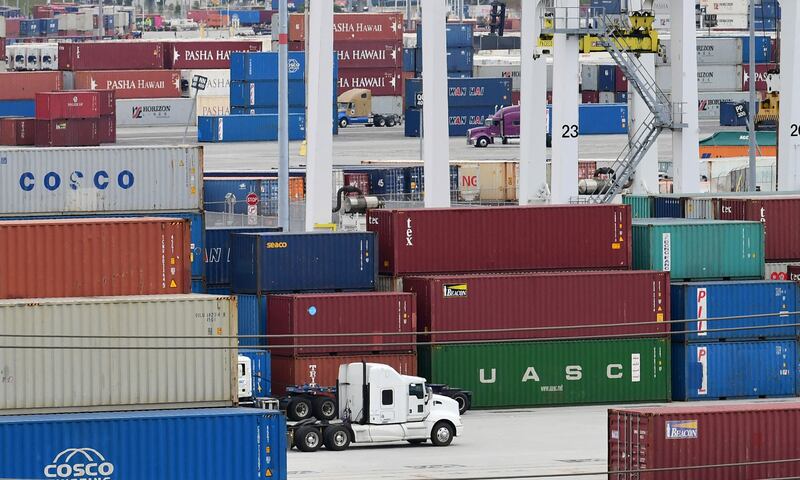The Group of 20 economies posted record-high merchandise trade in the second quarter of this year, but the rate of growth is slowing, as a rise in commodity prices amid supply chain challenges put pressure on costs, according to the Organisation for Economic Co-operation and Development (OECD).
Measured in seasonally adjusted current US dollars, exports rose 4.1 per cent in the three months ending June 30, showing a slowdown compared to the 8.6 per cent rise recorded in the first quarter of the year, while imports rose 6.4 per cent compared to the 8.5 per cent in the previous three months.
“Like in the previous quarter, rising commodity prices explain a large part of the increase, as congestion in international shipping and supply issues around semiconductors placed further pressure on the price of traded goods,” the OECD said.
The world’s largest economies, which include 19 countries and the European Union, have seen their rapid recovery ease off over the past month amid fears around the rapid spread of the Delta variant of the coronavirus, leading to a fall in consumer spending.
Earlier this month, the OECD said there were signs the recovery in the US and Japan was losing momentum, while parts of Europe and China have slowed as consumers appeared more reluctant to eat out, visit attractions and head to the shops.
Most major economies had passed their 2021 peak levels of growth and while they were still expanding, it was at a slower pace, the Paris-based organisation said, citing data supplied by its 38 member countries.
However, G20 economies more reliant on exports of primary commodities, experienced strong export growth in the second quarter, the OECD said. That was largely due to increasing prices, limited global supply for products such as copper, and strong demand, particularly from China, Japan and Korea.
Australia’s exports, for example, increased 10 per cent in the second quarter on the back of rising sales of cereals, metals and coal, while Brazilian exports rose 29.4 per cent, driven by iron ores and soybeans, and Russian exports grew 30.7 per cent as it benefitted from increasing energy prices.
Meanwhile, merchandise trade values in North America reached an all-time high in the second quarter with the US recording growth of 6.8 per cent driven by aircraft, pharmaceuticals and semiconductors, and strong demand from Canada and Mexico.
Imports in the quarter rose 4.2 per cent despite sluggish car sales, with robust imports of mobile phones.
Canada’s exports were up 4.7 per cent, driven by energy and forestry products, and imports were up 3.6 per cent due to demand for metals and pharmaceuticals.
European G20 economies also saw a boost in international trade, particularly for aircraft, agriculture products and pharmaceuticals driven by strong demand from China and the US, with export growth of 2.8 per cent in the EU and import growth of 5.7 per cent.
In the UK, exports rose 12.3 per cent and imports 11.3 per cent in a strong rebound from the first quarter slowdown.
The UK was the only G20 country to miss out on the trade surge in the first quarter because its imports and exports had already jumped in the final months of last year when companies stockpiled goods ahead of the country’s exit from the EU’s single market.
Separately, East Asian G20 economies saw imports rising faster than exports in the second quarter due to the rise in commodity prices, with exports from Japan and Korea growing 2.7 per cent and 2.2 per cent respectively, while imports rose by 7.4 per cent and 11.8 per cent, respectively, with trade in vehicles and parts driving the increase in particular for Korea.
In China, exports dropped 2.5 per cent in the second quarter, following "staggering" growth of 18.6 per cent in the previous three-month period, while imports rose 10.9 per cent with purchases of agricultural products, metals and semiconductors remaining strong.
Meanwhile, services exports for the G20 economies rose 4.5 per cent in the second quarter, while imports rose 4 per cent, up from the 2.9 per cent for both in the first quarter.
"The further surge in shipping costs in Q2 2021 continued to boost trade in transport services across most G20 economies, while trade in digitally deliverable services, such as telecommunications, compute and business services, remained strong," the OECD said.
Travel also "showed an uptick" in the second quarter, the OECD said, despite still being "severely affected by the Covid-19 containment measures and threatened by the emergence of variants".






